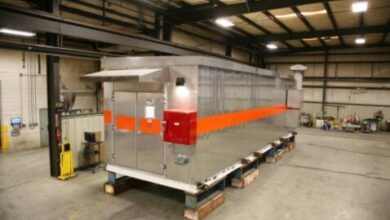Poka-Yoke: Designing for Error Prevention

Poka-yoke or error-proofing is a fundamental lean management approach focused on error prevention. As the name translates, this approach centres around the idea of designing systems where mistakes don’t occur in the first place. And in case of any mistakes, these can be instantly eliminated.
You might wonder, what’s the ultimate benefit of eliminating the possibility of errors? Simple – enhanced product and process quality.
Origins of Poka-Yoke
Poka-Yoke is a Japanese term for “Avoid errors” or “prevent mistakes.” Developed by Shigeo Shingo, the concept of Poka-Yoke originated in Japan during the 1960s.
While working at the Toyota Production System, Shingo realized that minimizing human error was essential to improving quality and reducing production costs.
The concept was further enhanced and utilized to develop systems where errors either couldn’t occur or would be instantly identified and corrected.
Application in Products and Processes
The principle of Poka-Yoke applies equally to products and services.
Organizations can significantly boost quality, enhance efficiency, and reduce costs by applying Poka-Yoke principles to both products and processes.
For products, Poka-Yoke means designing items in ways that prevent mistakes during manufacturing, assembly, use, or maintenance.
To fulfil this, efforts like special fixtures, clear labeling, color coding, or design elements that make mistakes difficult or impossible can be included.
In processes, Poka-Yoke focuses on designing workflows, procedures, and systems with minimum or no human error.
So, how can it be ensured? Simply by implementing verification checks, automated warning systems, visual work instructions, and other mechanisms that can detect and correct errors instantly.
Advantages and Disadvantages of Poka-Yoke
Key Advantages
- We’ve been discussing the most obvious benefit – improved quality and minimal defects.
- Reducing defects and scrap leads to significant financial benefits through less rework, lower material usage, and fewer customer complaints.
- More streamlined production processes, increased output, and reduced lead times.
- Poka-Yoke fosters a culture of continuous improvement by encouraging organizations to analyze errors, identify root causes, and implement preventive measures.
Potential Disadvantages
❌Initial investment cost can be significant when first implementing Poka-Yoke. This becomes prominent when the implementation involves new equipment, staff training, or specialized software is required.
❌Complexity sometimes becomes an issue during development and implementation, particularly for highly specialized production processes. The same issue can also arise when organizations customize the existing systems to accommodate error-proofing measures.
❌With rigid Poka-Yoke systems, organizations can face reduced flexibility. This potentially affects production adaptability, especially when rapid changes or customer orders are needed.
❌Complex solutions might overwhelm the workforce, leading to frustration and potential delays in the long run.
Read more: Building a Financial Framework With Bookkeeping 4694479430
Top 5 Application Areas of Poka-Yoke
Poka-Yoke principles find application in diverse fields where error prevention becomes critical:
| Manufacturing Industries | Regularly implement Poka-Yoke for component assembly, material processing, and various production operations |
| Logistics and Warehousing Operations | Benefit from error-prevention techniques in picking, packing, storage, and shipping. Barcode scanning, RFID technology, and visual markers all help improve accuracy and operational efficiency. |
| Service Sector | Use poka-yoke for error prevention. This includes carefully designed forms, processes, and systems that ensure customer requirements are accurately recorded and fulfilled. |
| Healthcare Facilities | Employ poka-yoke to prevent errors in patient care, medication administration, and documentation. This includes checklists, verification procedures, and safety protocols. |
| Software Development Teams | Apply error-prevention principles during programming, testing, and implementation phases. This is done with automated testing, code standards, and quality assurance measures to identify and correct errors in the development process. |
Practical Examples of Implementing Poka-Yoke in Production and Logistics
Poka-Yoke principles are effectively applied to operational resources such as shelving systems and workstations:
- Color-coded shelving systems in warehouses facilitate accurate product placement. When Poka-Yoke comes into action, workers can quickly identify the correct locations based on the color indicators. Results? Significantly reduced placement errors.
- Snap-in-shelf brackets designed to fit only in the correct orientation ensure proper assembly without alignment errors or stability issues.
- Ergonomic workstations with poka-yoke techniques place tools and materials within optimal reach zones. They also go after visual guidance to prevent handling errors and improve workflow.
- Sensor-based monitoring systems in logistics environments ensure proper storage and product movement. These systems can detect misplaced items or improperly secured loads way before they cause problems.
- Clear identification and labeling on shelves, workstations, and storage areas prevent confusion and mistakes. Barcode labels and visual markings enable the staff to quickly identify any problem.

Implementing Poka-Yoke in 5 Steps
Following the structured poka-yoke approach can yield prominent results.
1. Analyze existing processes to identify error sources:
Start with a careful analysis of production and logistics processes to identify potential error sources. Utilize root cause analysis, error reports, and employee feedback for valuable insights during this phase.
2. Prioritize Poka-Yoke measures:
Based on the outcomes of step 1, prioritize identified error sources and determine which areas would benefit more from poka-yoke.
3. Develop and implement solutions:
Next, develop and implement specific poka-yoke solutions. This may include designing specialized tools, fixtures, or work instructions. Focus on developing simple, user-friendly solutions that the employees will instantly adopt.
4. Provide employee training:
Don’t skip the training part. Train your staff on error detection methods, proper use of poka-yoke tools, and the importance of error prevention in the broader quality management context. start
5. Monitor and continuously improve:
All done and implemented? Now regularly review the poka-yoke’s effectiveness. Seek ongoing employee feedback to identify weaknesses or improvement opportunities, making adjustments as needed, and introducing error-prevention measures.
Final Thoughts
Poka-yoke is a proven approach to error prevention and quality improvement. For those looking to implement it, starting with small steps works as the best strategy.
Organizations can then gradually implement advanced poka-yoke solutions to achieve continuous improvement throughout their operations.




